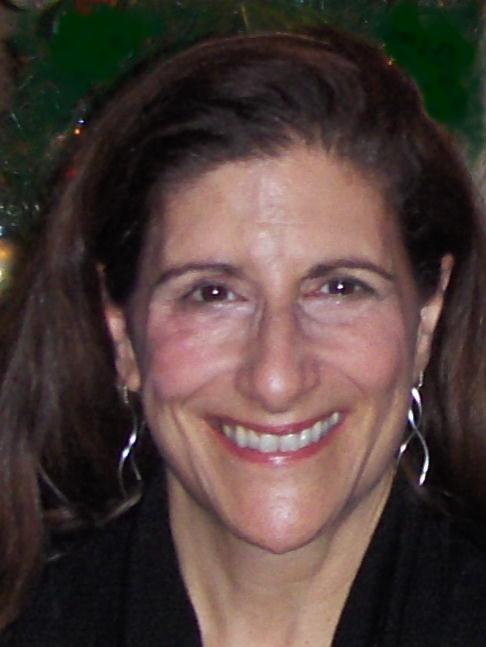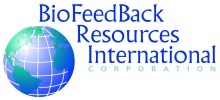|
This course material is designed to meet the didactic requirements for BCIA
(Biofeedback Certification International Alliance) certification in general
biofeedback also referred to as 'the 48 hours'.
The course content includes audio 10 lectures presented with PowerPoint
slides.
A sample of the audio PowerPoint is available at
http://www.bioneurofeedback.com/video.htm Note: you will be asked to
download Adobe Flash Player (link to download is on this page) and you'll
need to make sure your web browser is not blocking the material.
The BCIA Blueprint (referred to as the 48 hour didactic) is fully covered.
| |
| LECTURE |
BCIA BLUEPRINT AREA |
LECTURE CONTENT |
| 1 |
I |
History-Concepts-Learning |
| 2 |
II |
ANS Stress-Coping-Illness |
| 3 |
III |
Psychophysiological Recording |
| 4 |
IV |
Surface EMG |
| 5 |
V |
ANS Applications - Intake Procedures |
| 6 |
V |
ANS Applications - Thermal biofeedback |
| 7 |
V |
ANS Applications - Cardiovascular |
| 8 |
V |
ANS Applications - Electrodermal Activity |
| 9 |
VI |
EEG Applications |
| 10 |
VII & VIII |
Adjunctive Interventions-Professional Conduct |
|
|
|
|
1. History-Concepts-Learning - This first lecture entitled "Biofeedback
Psychophysiological Training" covers the elements in the BCIA blueprint in
under section I Orientation to Biofeedback. The lecture answers "what is
biofeedback and what is psychophysiology" and covers applied
psychophysiology, including a history of psychophysiology, cybernetic and
learning theory and biofeedback, definitions of biofeedback, a history of
biofeedback, clinical applications of biofeedback training, the history of
EMG and EEG biofeedback, important research studies, popular biofeedback
techniques, feedback schedules, efficacy, biofeedback and the mind-body
movement, and complimentary alternative medicine.
|
2. The Autonomic Nervous System (ANS) Stress, Coping and Illness - The
second lecture covers the structure and function of the nervous system,
parasympathetic and sympathetic branches, Canon's fight / flight response,
acute stress, Selye's General Adaptation Syndrome, chronic stress, autonomic
balance and psychophysiological flexibility, perceptions and psychosocial
mediators of stress, biofeedback and classical conditioning, cognitive,
behavioral and physiological aspects of the stress response, autonomic
measures, correlates of arousal and biofeedback measures.
|
|
3. Psychophysiological Recording - This lecture describes the most commonly
employed biofeedback modalities: sEMG, skin temperature, electrodermal
activity, EKG and heart rate, respiration, EEG, and introduces the student
to sensors and sensor placements, characteristic signals; signal processing
and feedback displays; use of computers in biofeedback; sources of artifact
and their effects on physiological recordings, and essential electronic
terms and concepts for biofeedback applications, such as electrode
impedance, signal-to-noise ratio, bandpass, peak-to-peak voltage, root mean
square voltage, power spectrum.
|
4. Surface EMG - This lecture covers muscle anatomy and physiology;
antagonistic and, synergistic muscle groups; central nervous system, chronic
neuromuscular pain; general treatment considerations; target muscles,
typical electrode placements, and SEMG treatment protocols for specific
neuromuscular conditions.
|
|
5. Autonomic Nervous System (ANS) applications. Intake Procedures - The
Psychophysiological Stress Profile (PSP) - The fifth PowerPoint in the
series covers the structure and function of the autonomic nervous system;
psychophysiological concepts, and general applications of autonomic
biofeedback; Pathophysiology, biofeedback modalities, and treatment
protocols for specific ANS biofeedback applications.
|
6. Autonomic Nervous System (ANS) Applications: Thermal (Temp)
biofeedback -
Psychophysiological Concepts, psychophysiological responses, types of
stress, vascular disorders, migraine, Raynaud's, hypertension, the structure
and function of the autonomic nervous system, sympathetic and
parasympathetic divisions, circulatory system, peripheral hand temperature,
thermal biofeedback, general relaxation strategies, biofeedback assisted
relaxation, breath training, hyperventilation, physiological mechanisms
underlying skin temperature, single pointed concentration, blood volume
pulse, Migraine, Raynaud's, thermal biofeedback, hypertension, blood
pressure.
|
|
7. Autonomic Nervous System (ANS) Applications: Respiration & Respiratory
Disorders, Cardiovascular System and Disorders - The first part of this
seventh lecture covers the respiratory system, including CO2 functions,
hypocapnia, functional respiration dysfunction, biofeedback assessments of
respiration rate, treatments, and a complete breath training program. The
second part covers the cardiovascular system and disorders including,
physiological basics, heart rate, high blood pressure and
psychophysiological treatments, and heart rate variability (HRV).
|
8. Autonomic Nervous System (ANS) Applications: Somatic & Cognitive Anxiety
Electrodermal Activity - Somatic and cognitive anxiety, the stress response,
the physiology of electrodermal activity (EDA), history of Galvanic Skin
Resistance (GSR) in physiology, Tarchanoff Response, Jungian use of GSR,
skin conductance and skin resistance, Ohm's law and GSR, biofeedback
session, the GSR pattern is labile, measuring GSR, treatments using GSR, the
impact of diversity on psychophysiology.
|
|
9. EEG Biofeedback (Neurofeedback) Electroencephalography, Operant condition
of the central nervous system, learned normalization of EEG patterns - This
lecture covers organization of specific central nervous system, structures
and neurotransmitter pathways, EEG patterns and their behavioral correlates,
including delta, theta, alpha, beta, and SMR frequency ranges, clinical uses
and efficacy of EEG biofeedback, potential effects of prescribed and
non-prescribed drugs on clinical presentation, EEG measures, and Entrainment
stimulation.
|
10. Adjunctive Interventions-Professional Conduct - This 10th and final
lecture in the series first covers intake procedures relaxation methods, and
cognitive interventions. The lecture then continues on professional conduct
including; responsibility and competence, legal versus ethical requirements,
client rights, supervision and consultation and professional relationships.
|
Biofeedback concerns itself with aspects of mind-body interactions;
recognizing that optimal functioning and health contribute to emotional
well-being. Psychophysiological treatments and biofeedback techniques are
used in clinical, sports, business and educational arenas as well as many
others. I hope this learning adventure will be rewarding for you and your
students.
Course Objectives
- To acquire knowledge regarding the field of biofeedback and
psychophysiology and to obtain the necessary didactic information for BCIA
certification in general biofeedback.
- To provide students with knowledge of the psychophysiological mechanisms
that influence, shape and impact the mind and body.
- To ensure students are knowledgeable of the theoretical concepts, both
foundational and current, which have formed the general body of knowledge
concerning mind-body interactions and their impact on disease and
dysfunctional states.
Prerequisites for participation
This course is available to all. However, if you
wish to use this course to meet part of the didactic requirements for BCIA
certification in general biofeedback, you need to meet the BCIA
pre-educational specified requirements. Please refer to the BCIA web site
for this information. www.bcia.org
Schedule & format for learning
Total Course Time: 48 hours. Fully covers the BCIA blueprint of learning.
This is a self-directed, self-paced course which includes an audio lecture
with PowerPoint slides.
- Lectures: 20 hours. 10 PowerPoint lectures which are approximately 2
hours each (the student can control the pace of each slide)
- Required Course Text: approximately 10 hours of reading
- Text is NOT INCLUDED in course fee.
- Required Course Educational Software - approximately 5 hours - NOT
INCLUDED
- Course Educational Software:
Biofeedback Tutor; Dr. Fred Shaffer, 2006 Biosource Software.
- Required web reading: approximately 8 hours (links to required reading
are provided in the syllabus)
- "Required" Tests: approximately 5 hours. To obtain a certificate of
completion which you will submit to BCIA as proof of completing the
Blueprint of Knowledge didactic training, you must submit and pass all
tests. Passing grade is 65%. Retesting is permitted at no extra charge.
Required
You must have Flash Player to view the course material. It can be
downloaded without charge at
Adobe under Downloads.
Course Fee: $575.00
Registration Form: You may download and print the
registration form (with instructions) and fax or
mail to us.
For more information, please contact our workshop
coordinator: 1-877-669-6463 or 914-762-4646.
About the author
 Dr. Celeste De Bease has been training and teaching students in biofeedback
for over 25 years. She has served on the BCIA (Biofeedback Certification
International Alliance) as a member and as its chair. She built the
biofeedback program at Widener University and continues to consult and teach
at Widener.
Dr. Celeste De Bease has been training and teaching students in biofeedback
for over 25 years. She has served on the BCIA (Biofeedback Certification
International Alliance) as a member and as its chair. She built the
biofeedback program at Widener University and continues to consult and teach
at Widener.
Her course on General Biofeedback provides students with knowledge of the
psychophysiological mechanisms that influence, shape and impact the mind and
body. It is approved by BCIA as a course that meets the didactic
requirements for certification in General Biofeedback (often referred to as
the Blueprint of Knowledge).
It is designed to ensure that students are knowledgeable of the theoretical
concepts, both foundational and current, which have formed the general body
of knowledge concerning mind-body interactions and their impact on disease
process.
The PowerPoint DVD of the BCIA Blueprint of Knowledge in General was
developed by Dr. Celeste De Bease and contains the same material taught in
the course she teaches at Widener University entitled Applied
Psychophysiology.
|




